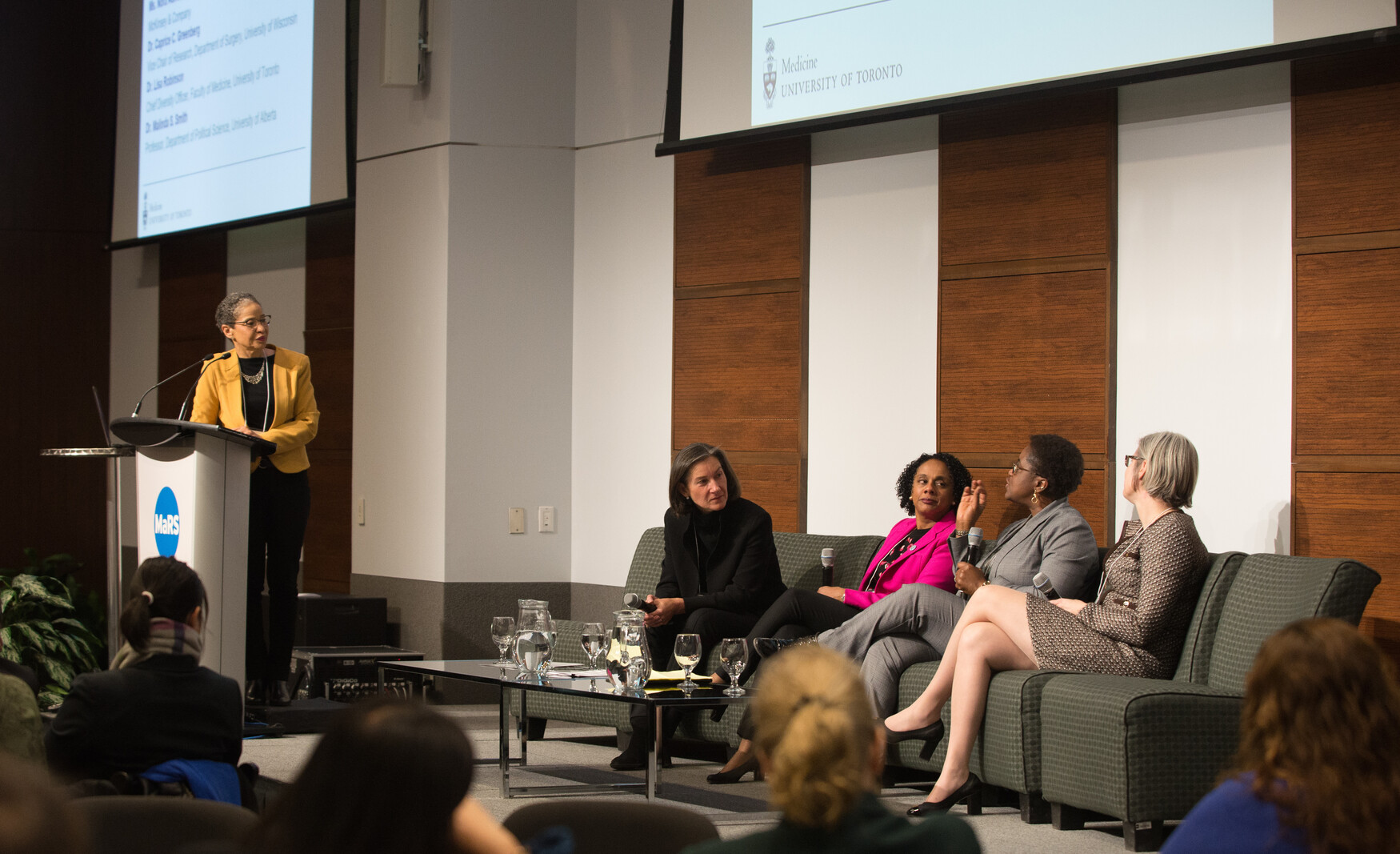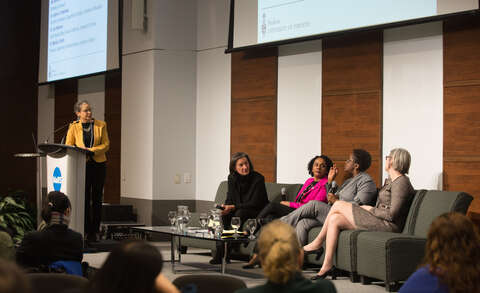
Brianne Tulk

Ask any female physician and she can tell you about a time a patient asked, “When is the doctor going to see me?”
She can tell you about the time she was mistaken for a student, nurse, pharmacist or another member of staff, and when she had to struggle to be recognized as a doctor. It’s a routine exchange that stems from implicit assumptions around gender, and intersects with biases of race and ethnicity.
This was one of the issues at the heart of the second annual Summit for Women in Academic Medicine held last week. Hosted by the Department of Medicine, the summit brought together the voices of female clinical faculty across the Faculty of Medicine and leaders outside of the medical field to address gender equity and diversity, and to empower diversity leadership in academic medicine.
Women currently make up more than half of medical students and residents at University of Toronto. As more women enter the medical field, the summit was an opportunity to focus on changing the professional landscape to encourage and support women who are pursuing leadership roles in academic medicine.
Dr. Gillian Hawker, Chair of the Department of Medicine, is one of the voices for that change, calling for more women to enter leadership roles.
“Women are not equally represented in faculty, and even less so in leadership positions like full professors or Tier 1 Canada Research Chairs,” Hawker says. “This is not going to fix itself on its own.”
For Hawker, it’s important to address the barriers that women face in advancing their careers in academic medicine, from sexism and harassment to more scheduling flexibility and better parental leave policies. She’s identified what she calls the “leaky pipeline” from medical school to academic medicine, where despite making up more than half of all medical students and residents, women are dropping out through the ranks of leadership.
Currently, women make up approximately 40 per cent of faculty in the Department of Medicine, up from 36 per cent five years ago. Hawker says it’s an encouraging shift, but recognizes that more still needs to be done.
“I feel that there’s already been tangible change in the Department of Medicine, but it’s just the beginning,” she says. “I hope the summit empowers other departments to make changes as well.”
The summit brought together panelists to speak on topics that touched on advancement across other industries, promoting structural changes such as changing institutional culture, women’s leadership and diversity, and allies. Equitable representation in academic leadership and the intersection between gender and race were echoed by panelists as some of the areas needing the greatest attention.
“In medicine, it’s important that we reflect the population that we care for,” says Dr. Sharon Straus, Vice Chair of Mentorship, Equity and Diversity in the Department of Medicine and one of the organizers of the summit. “That reflection should happen in the clinician groups, and it should happen in leadership. We don’t see that right now, and we’re not going be able to ensure we’re meeting our community needs until that happens.”
“We have no excuse not to be doing this,” adds Dr. Lisa Robinson, Chief Diversity Officer in the Faculty of Medicine and a professor in the Department of Paediatrics. “Talking about it and giving spaces like this where the focus is gender, but also reminding everyone that there are other aspects of diversity and inclusion.”
For the final panel, the women-only summit invited male colleagues to join the discussion on the role of allies, recognizing the need for allies and partners to help change the status quo and create environments where more women can enter leadership positions.
“The work shouldn’t fall to the people who are underrepresented to educate everybody around them,” Robinson says. “It’s not solely the responsibility of women and marginalized people to speak up. It’s the responsibility of all of us.”
The panel was a strong reminder that allies are needed not just to encourage greater diversity in leadership roles, but also to confront sexism, racism, harassment and bullying in all areas of medicine.
One of the panelists speaking on the role of allies, Nouman Ashraf, assistant professor at the Rotman School of Management, says that the role of an ally is to bring focused attention to marginalized voices.
“The role of an ally is to say that I am affected by your marginalization because it makes me complicit in enabling a system that is less than equal for everybody,” he says. “That for me is a threat to all of our communities and organizations.”
Now in its second year, the Summit for Women in Academic Medicine is turning its focus on what can be done to ensure institutional change.
“It's not just about the talking that's happening, it's about developing the next steps for action,” says Straus. “Until we do that, we're not going to see the change that we want.”
“We can't lead the change without the support of our colleagues,” Hawker adds. “We need to be able to generate those allies in all leaders and all faculty in order to actually collectively make a difference. Because if it's only a solo voice, or a few voices, we won't be successful.”